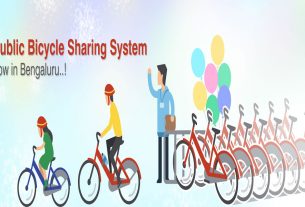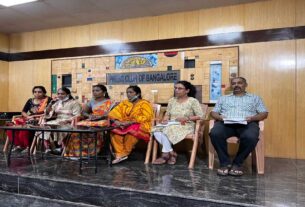Absent Braille safety manuals and lavatories without Braille buttons add to the travel woes of the blind.
Blind passengers complain that their safety on board is compromised as most airlines do not instruct them with safety and evacuation procedures. Apart from missing Braille safety manuals, lavatories prove to be equally inefficient due to missing Braille toilet signs.
Chandrushekar K.N, treasurer of Cricket Association for The Blind in India, said that the cabin crew hands out Braille safety manuals on very rare occasions, and now he has stopped asking for them. “The lavatories are also not Braille-equipped, and there aren’t any Braille flush button signs or toilet roll signs to guide us better,” he added.
The handbook of Journey of Persons with Reduced Mobility by the Airport Authority of India (AAI) states that every airline must ensure that every blind person on board is instructed of the emergency and safety procedures before takeoff. Civil Aviation Requirements (CAR) of persons with disabilities also states that the Braille safety instruction manual should be made available to blind persons on board.
“I always take an escort with me while I travel and I was never offered a Braille safety manual on board. I think they assume we have an escort so there is no need to brief us,” said, S. Parashivamurthy, general secretary of the Karnataka Welfare Association for The Blind.
However, the airlines maintain that they help the visually impaired and Braille safety manuals are always kept in the plane for their assistance. “We personally hand over manuals to the blind and make sure they are informed of all the emergency and safety procedures. There is never any negligence on our part and all the protocols are followed,” said, Neha, a cabin crew assistant of a private airline.
Smriti (name changed), from a reputed airline said that thorough safety and emergency briefing is provided to the blind and they are made to feel the vests and oxygen masks. “We don’t have Braille safety manuals on board but the well-being of the blind is taken care of throughout the journey,” she added.
With increasing air traffic, shrinking airspace, and increasing medical issues, there is an increase in emergency landings. There were 99 emergency landings in 2016-2017, according to data shared by the Minister of State for Civil Aviation Jayant Sinha in Rajya Sabha. Maximum emergency landings were by Air India followed by Jet Airways, SpiceJet, and Indigo.
According to data analysis by Aviation Safety Network, 2173 people have been killed in fatal air crashes since 1947. In airworthiness in accordance with International Civil Aviation Organization (ICAO) standards, Indian airlines stand at 89 per cent while Sri Lanka ranks above India at 93 per cent. Airworthiness means that the staff must have sufficient knowledge and skill to apply principles in the design, manufacture, operation, and maintenance of aircraft.
Apart from not being provided with Braille safety manuals, inaccessible lavatories, late deplaning is another issue that people with disabilities face the most. “They should put us on priority instead of asking us to sit and wait till all the passengers have deplaned,” said, Chandrushekar K.N.
Rekha Thangaraj, a former cabin crew who worked for Jet airways, Deccan Airways, Kingfisher, and Indigo airlines said that she can’t recall the airlines keeping Braille safety manuals inside the plane. “We had quick reference manuals but not Braille safety manuals. We used to make them feel life vests, oxygen masks, make them count steps to the exit doors,” she said.
Rishabh Vaishya, an aerospace engineer, said that while missing Braille safety manuals are a result of the careless implementation of aviation safety guidelines, Braille-equipped lavatories and other such additions to the aircraft are debatable due to cost and other regulatory factors. “The Indian aviation industry has a thin margin and it tries to optimize cost in every possible way. Aircraft manufacturers, regulators, and airlines, all must work together to come to a comprehensive decision of making aircrafts accessible for disabled,” he said.




